Description
What do you want to achieve with hospital privacy curtains?
Knowing your aim for patient privacy through curtains will help you choose the best options.
Every bed should have medical curtains around it that can be closed.
Each curtain has its laminated sign warning that there could be a procedure going on inside to prevent anyone from barging straight in.
The closed curtains and the laminated signs result in something incredibly endearing.
When a doctor, nurse, or healthcare assistant wants to enter the tented confines of a curtained bed, they say “Knock knock”. The curtains magically become a door to which they “knock” to gain entry.

Here are some specific goals you might have, and corresponding curtain features to consider.
First and foremost you need to maximize patient physical privacy. To do so you need:
- Choose curtains that reach the floor to prevent gaps and unwanted exposure.
- Opt for fabrics with good opacity to block light and vision.
- Select wide enough curtains to enclose beds or designated areas fully.
- Choose a sturdy track system for smooth and complete closure.
Physical privacy is crucial in hospitals for several key reasons.
Patient dignity and well-being
Hospital privacy curtains shield patients from unwanted exposure during examinations, procedures, and recovery.
This protects their physical and emotional privacy, allowing them to feel safe and comfortable in a vulnerable situation.
Infection control
Privacy curtains can help to contain the spread of airborne pathogens by creating physical barriers between patients and healthcare workers.
This is especially important in areas where patients with infectious diseases are treated.

Professionalism and confidentiality
Privacy curtains in hospitals create a sense of separation and professionalism, allowing healthcare workers to focus on their duties without distractions.
They also help to maintain patient confidentiality by preventing conversations and medical information from being overheard.
Enhanced patient experience
Privacy curtains can contribute to a more peaceful and restful environment for patients, reducing stress and anxiety. They also allow patients to have more control over their personal space and make them feel more empowered.
Accessibility considerations
Well-installed hospital privacy curtains can be easily drawn and opened to accommodate patients with different mobility levels and needs. This ensures that everyone has access to the same level of privacy and dignity.
Here below are some of the best ways to achieve physical privacy in hospitals:
Privacy Curtains
Install privacy curtains in all patient rooms, treatment areas, and other sensitive areas. Choose curtains that are long enough to reach the floor, made from opaque materials, and easy to clean.
- Use double curtains for extra privacy and soundproofing.
- Consider motorized curtains for patients with limited mobility.
Double-layered curtains provide more privacy than single-layered curtains. This is especially true during the day when light is shining through the window. The extra layer of fabric provides a barrier that reduces the amount of light entering the room, providing increased privacy.
Other measures
- Use room dividers in shared rooms to create separate spaces for patients.
- Provide portable privacy screens for use in waiting areas or other locations.
- Train staff on the importance of patient privacy and how to use curtains and other privacy measures effectively.
- Educate patients about their privacy rights and how to ask for privacy when needed.
By taking these steps, hospitals can create a culture of privacy that fosters trust with patients and ensures their sensitive information is protected.
Remember, physical privacy is essential for maintaining patient dignity, promoting healing, and ensuring the highest quality of care.
Soundproof enhancement
Unwanted noise is an invasion of your privacy and can have serious health implications. Long-term exposure to unwanted noise creates a loss of focus, sleep loss, stress, and anxiety, and is bad for your heart.

Not all sound is considered noise pollution. The World Health Organization (WHO) defines noise above 65 decibels (dB) as noise pollution. To be precise, noise becomes harmful when it exceeds 75 decibels (dB) and is painful above 120 dB. As a consequence, it is recommended noise levels be kept below 65 dB during the day and indicates that restful sleep is impossible with nighttime ambient noise levels over 30 dB.
- Material: Opt for thick fabrics like flannel or velvet, or consider specialized soundproof curtains.
- Double Layers: Layer two curtains for increased sound absorption.
- Overlapping Panels: Choose curtains with overlapping panels for better sound blockage at the edges.
Soundproof curtains can be a great way to enhance your privacy and reduce noise coming into or out of a room. However, it’s important to understand their limitations and how they work to maximize their effectiveness.
Here’s a breakdown:
How soundproof curtains work
- Sound absorption: Most soundproof curtains are made from thick, dense materials like velvet, polyester, or vinyl. These materials help absorb sound waves, preventing them from bouncing around and creating echoes or traveling through the room.
- Blocking sound transmission: The thickness of the curtain also plays a role in blocking sound from entering or leaving a room. Thicker curtains generally provide better soundproofing.
- Sealing gaps: For optimal soundproofing, curtains need to be hung close to the walls and ceiling, with minimal gaps for sound to leak through. This might involve using curtain rods with side seals or installing the curtains directly onto the wall with adhesive.
Enhancements for soundproofing
- Multiple layers: Consider using multiple layers of curtains for improved soundproofing. You can combine different materials to maximize absorption and blocking, like a heavy vinyl layer paired with a soft velvet layer.
- Mass-loaded vinyl (MLV): Add a layer of MLV behind your curtains for further noise reduction. This dense material is highly effective at absorbing sound.
- Door curtains: Use soundproof curtains on doorways to create a barrier between rooms.
- Acoustic panels: Combine curtains with acoustic panels on walls and ceilings for enhanced sound absorption and a more controlled acoustic environment.
Privacy enhancement
- Blackout curtains: Blackout curtains are typically thicker and denser than traditional curtains, providing additional soundproofing and excellent privacy by blocking light and preventing people from seeing through.
- Curtain lining: Opt for curtains with a thick inner lining for better sound absorption and privacy. Fabric that drapes well will also prevent sound from leaking through gaps along the sides.
Limitations
- Soundproofing vs. noise reduction: Soundproof curtains can significantly reduce noise, but they won’t completely soundproof a room, especially against low-frequency sounds.
- Cost: High-quality soundproof curtains can be expensive, especially when considering multiple layers and other enhancements.
Remember
- Measure your windows and doorways accurately to ensure proper fit and sealing.
- Choose curtains made with soundproof materials and appropriate thickness.
- Hang curtains with minimal gaps and consider sealing if necessary.
- Combine curtains with other acoustic solutions for optimal results.
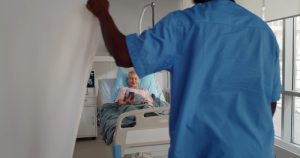
By following these tips, you can effectively enhance your privacy and reduce noise with soundproof curtains, creating a more peaceful and comfortable environment.
I hope this information helps! Feel free to ask any further questions you might have.
Infection Control with Hospital Privacy Curtains
- Material: Select anti-microbial or easy-to-clean fabrics that can be disinfected regularly.
- Washability: Choose curtains that can be laundered at high temperatures to kill bacteria and viruses.
- Track Design: Opt for tracks that are easy to clean and disinfect.
Hospital privacy curtains play a crucial role in infection control, acting as physical barriers that can help prevent the spread of pathogens between patients and healthcare workers.
While their primary function is to provide patient privacy and dignity, their impact on infection control is significant.
How curtains contribute to infection control
-
Barrier against airborne pathogens: Curtains can block the movement of airborne droplets and aerosols contaminated with viruses and bacteria, especially important in areas like isolation rooms and during procedures that generate aerosols.
-
Reduce surface contamination: Curtains can intercept coughs, sneezes, and other bodily fluids, preventing them from settling on surfaces where they can survive and transmit pathogens.
-
Promote hand hygiene: By offering a sense of privacy, curtains encourage patients and staff to perform hand hygiene after contact with potentially contaminated surfaces or patients.
Optimizing curtains for infection control
- Material: Choose curtains made from antimicrobial fabrics or treated with disinfectant coatings to reduce pathogen survival.
- Cleaning and disinfection: Implement regular cleaning protocols for curtains, especially in high-risk areas. Consider methods like hydrogen peroxide wipes or ultraviolet light disinfection.
- Design: Opt for curtains that reach the floor and have minimal gaps to maximize their barrier effect.
- Track system: Choose tracks that are easy to clean and disinfect, minimizing potential harboring sites for pathogens.
Additional considerations
- Curtain use: Educate staff and patients on proper curtain use to maximize their effectiveness in infection control.
- Alternatives: In some cases, alternative barriers like plexiglass shields may be necessary for additional protection.
- Regular assessment: Monitor the condition and effectiveness of your curtains and replace them when necessary.
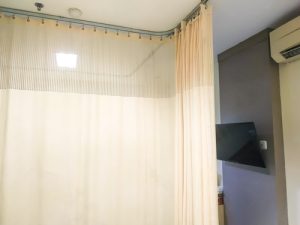
Remember
- Infection control is a multi-pronged approach. Curtains are just one piece of the puzzle, but they play a valuable role in reducing the risk of hospital-acquired infections.
- Ongoing research: New materials and technologies are constantly being developed for hospital curtains, offering even greater potential for infection control.
Comfort and Dignity with Privacy Curtains
Color and Design
Choose calming colors and patterns that create a relaxing atmosphere.
Light Control
Offer blackout curtains for patients who prefer darkness for sleep or specific procedures.
Customizable Options
Consider curtains with drawstrings or velcro closures that allow for more personalized privacy adjustments.
In the often stressful and vulnerable environment of a hospital, patient comfort and dignity are paramount. One simple yet impactful way to achieve this is through the use of well-designed and well-utilized privacy curtains.

Benefits of Hospital Privacy Curtains
Physical privacy
Shielding patients from unwanted exposure during examinations, procedures, and recovery, allowing them to feel safe and secure.
Infection control
Creating physical barriers that help prevent the spread of airborne pathogens between patients and healthcare workers.
Professionalism and confidentiality
Maintaining a sense of separation and allowing healthcare workers to focus on their duties without distractions, while also protecting patient confidentiality.
Enhanced patient experience

Contributing to a more peaceful and restful environment, reducing stress and anxiety, and allowing patients to feel more in control of their surroundings.
Here are some key steps to ensure your privacy curtains effectively boost patient comfort and dignity:
Choose the right curtains
- Material: Opt for opaque fabrics that provide good privacy and soundproofing. Consider antimicrobial options for enhanced infection control.
- Length: Accurately measure and ensure curtains reach the floor to prevent gaps and unwanted exposure.
- Width: Select curtains wide enough to enclose beds or designated areas fully.
- Track system: Invest in a reliable track system for smooth and complete closure.
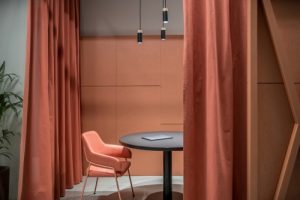
Prioritize user-friendliness
- Ease of use: Choose curtains that are easy to open and close with minimal effort.
- Accessibility: Consider motorized curtains or alternative systems for patients with limited mobility.
- Track height: Ensure the track is within easy reach for both patients and staff.
Foster a culture of privacy
- Train staff: Educate healthcare workers on the importance of patient privacy and proper curtain use.
- Empower patients: Encourage patients to express their privacy needs and preferences.
- Respect choices: Always respect a patient’s decision to have the curtains drawn or open.
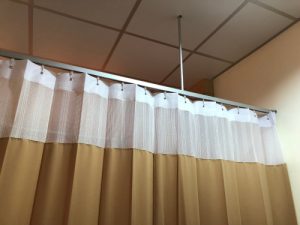
Create a calming environment
- Color and design: Choose calming colors and patterns that create a relaxing atmosphere.
- Light control: Offer blackout curtains for patients who prefer darkness for sleep or specific procedures.
- Additional touches: Consider providing privacy screens for extra areas or portable noise-canceling headphones.
By implementing these recommendations, you can make a significant difference in the experience of your patients. Privacy curtains, when used thoughtfully and effectively, can be a powerful tool for promoting patient comfort, dignity, and well-being in your hospital setting.
Ensure Accessibility
- Ease of use: Choose curtains that are easy to open and close with minimal effort.
- Automated options: Consider motorized curtains for patients with limited mobility.
- Track Height: Ensure the track is within easy reach for patients and staff.
Ensuring accessibility with hospital privacy curtains is crucial for creating a truly inclusive and dignified environment for all patients. Here are some key strategies to consider:
Curtain Design and Functionality
-
Ease of operation: Choose curtains that are easy to open and close with minimal effort, both manually and electrically. Consider features like:
- Large pull handles or knobs: Easy to grasp for patients with limited dexterity.
- Magnetic closures: No need for tying or fiddling with knots.
- Motorized options: Ideal for patients with limited mobility or upper body strength.
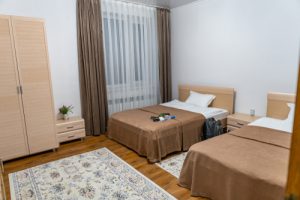
-
Track placement: Ensure the track is within easy reach for patients from seated or standing positions.
-
Curtain weight: Opt for lightweight fabrics that are easier to manipulate.
-
Visual and auditory cues: Consider adding color-coded handles and audible signals for automated curtains to assist visually impaired or deaf patients.
Accommodation for Different Needs
- Reach extenders: Provide tools like grab bars or long-handled hooks to help patients with limited reach operate the curtains.
- Privacy screens: Offer portable screens for additional privacy in shared rooms or waiting areas.
- Clear communication: Inform staff about patients with specific needs and how to best adapt curtain use to their requirements.
Collaboration and Training
- Involve patients and disability advocacy groups: Gain feedback on accessibility challenges and design preferences directly from those who utilize the curtains.
- Educate staff: Train healthcare workers on how to operate curtains with accessibility considerations in mind, and to be sensitive to individual patient needs.
- Regular evaluation: Assess the effectiveness of your accessibility measures and make adjustments as needed.
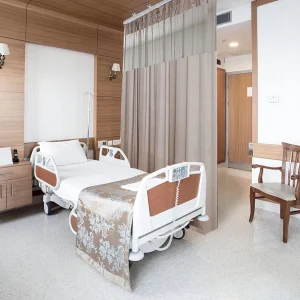
Additional Tips
- Prioritize curtain length: Ensure curtains reach the floor to provide maximum privacy and barrier against airborne pathogens.
- Offer a variety of curtain widths: Accommodate different bed sizes and configurations.
- Consider track design: Choose tracks with smooth movement and minimal gaps.
- Maintain equipment: Regularly clean and inspect curtains and tracks to ensure proper functionality.

By implementing these strategies, you can ensure that your hospital privacy curtains are accessible to all patients, regardless of their physical abilities. This promotes a more inclusive and respectful environment, empowering patients to feel comfortable and cared for during their hospital stay.

Remember
- Assess your specific needs and priorities. What are the most critical areas for privacy in your hospital setting?
- Consult with hospital staff and patients. Get their feedback on different curtain options and features.
- Stay within your budget. Consider cost-effective solutions that still meet your desired goals.
By focusing on your specific aims for patient privacy, you can make informed decisions about curtain selection and create a more comfortable, dignified, and safe environment for everyone in your hospital.
Beyond hospital privacy curtains
Safeguarding patient privacy in hospitals is a multifaceted endeavor that requires a well-rounded approach beyond privacy curtains.
Here are some key strategies to consider:
Technological Measures
Data Security
Implement robust data security measures like encryption, access controls, and regular audits to protect sensitive patient information from unauthorized access and breaches.
Secure Communication
Utilize secure communication channels for sharing patient information, such as encrypted email or HIPAA-compliant messaging platforms.
Device Management
Enforce strict policies for using and managing electronic devices that access patient data, including mobile devices and laptops.
Physical Security

- Privacy Curtains: Maintain proper use of privacy curtains in examination rooms, treatment areas, and patient bays to ensure physical privacy during consultations and procedures.
- Restricted Access: Implement access control measures for sensitive areas like medication storage and patient record rooms. Monitor and log staff access to patient information.
- Secure Disposal: Ensure proper disposal of medical waste and patient records to prevent unauthorized access to sensitive information.
Administrative Measures
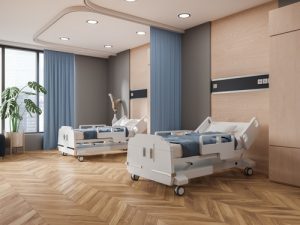
Privacy Policies
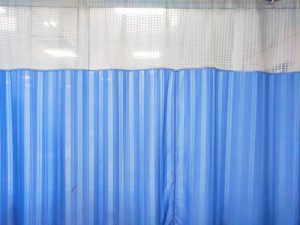
Develop and enforce clear and comprehensive privacy policies outlining patient rights and data handling procedures.
Staff Training
Conduct regular training for all hospital staff on HIPAA regulations, data security best practices, and the importance of patient privacy.
Patient Education
Inform patients about their privacy rights and how their information is used and protected. Encourage them to ask questions and raise concerns.
Collaborative Efforts
Third-Party Partnerships
Collaborate with third-party vendors who handle patient data to ensure they have adequate security measures in place.
Government Guidelines
Adhere to relevant government regulations and guidelines on patient privacy protection.
Industry Best Practices
Stay updated on industry best practices and emerging technologies for safeguarding patient privacy.
By implementing these strategies, hospitals can create a culture of privacy that fosters trust with patients and ensures their sensitive information is protected. Remember, safeguarding patient privacy is an ongoing process that requires continuous commitment and vigilance from everyone involved.


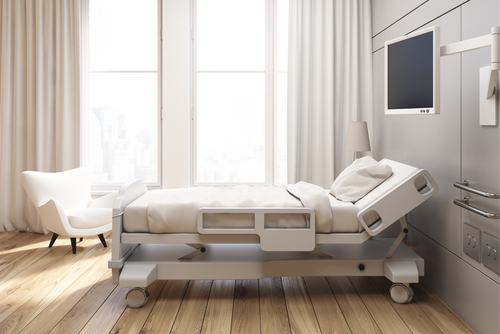
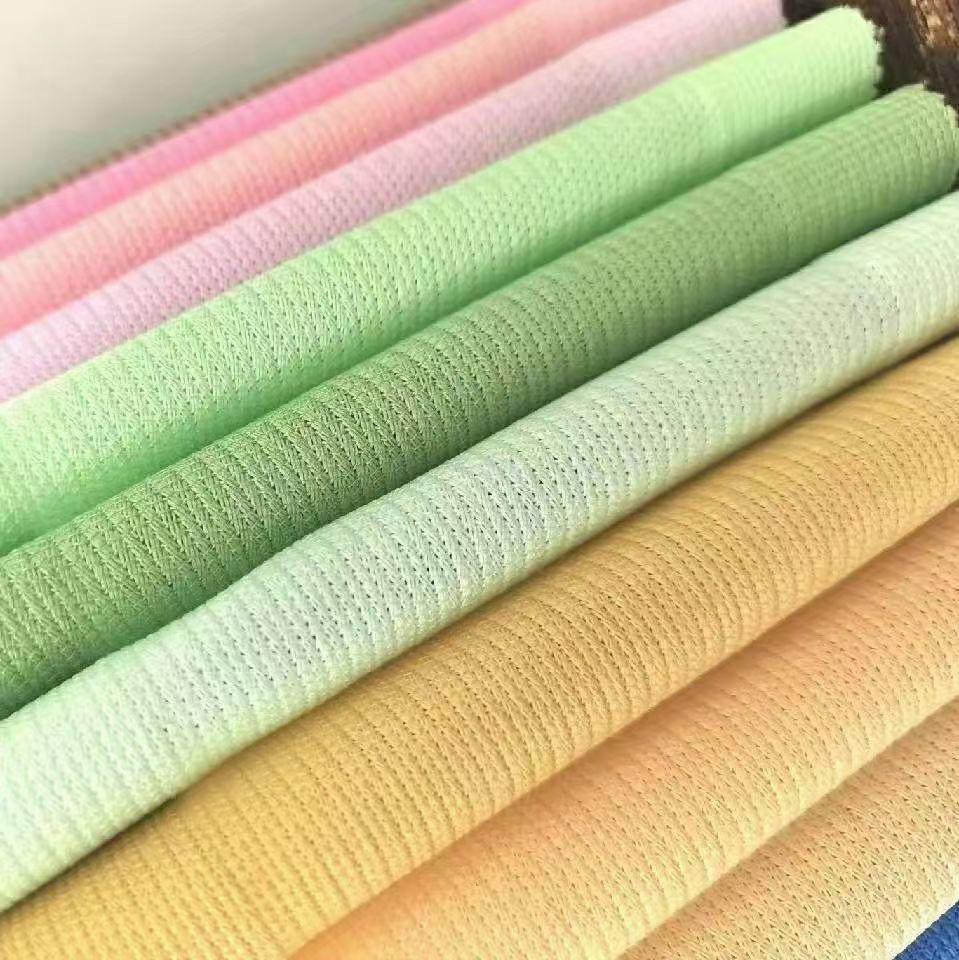

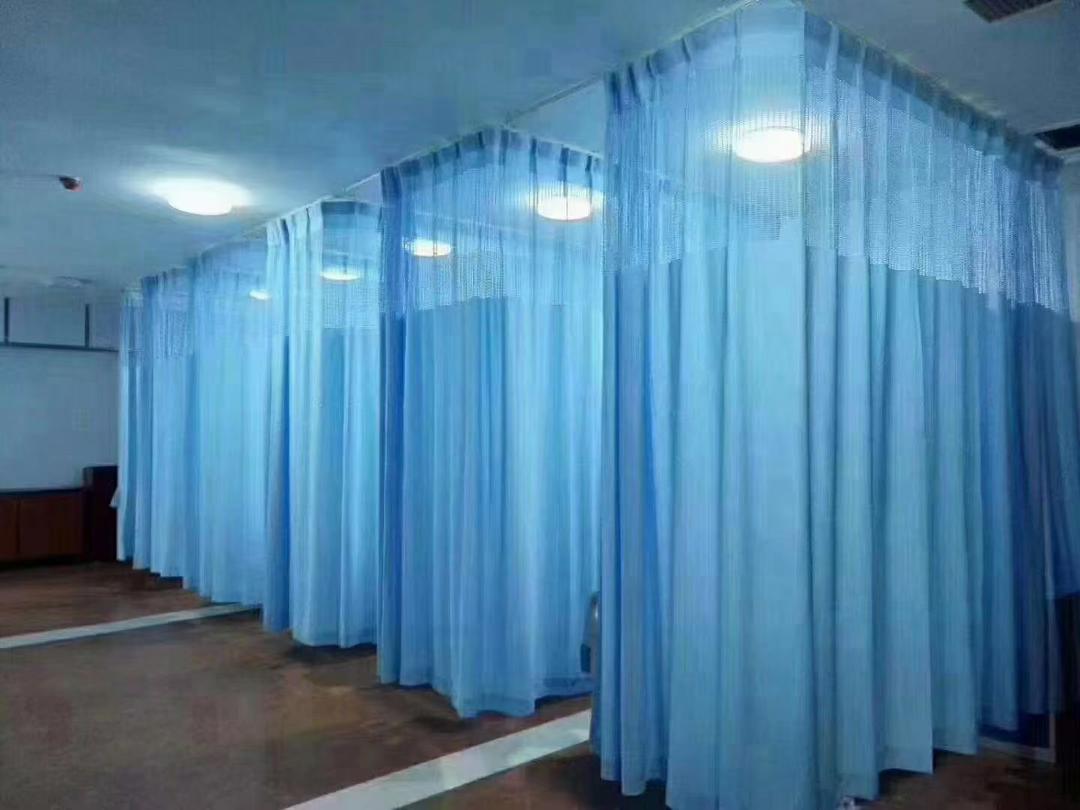
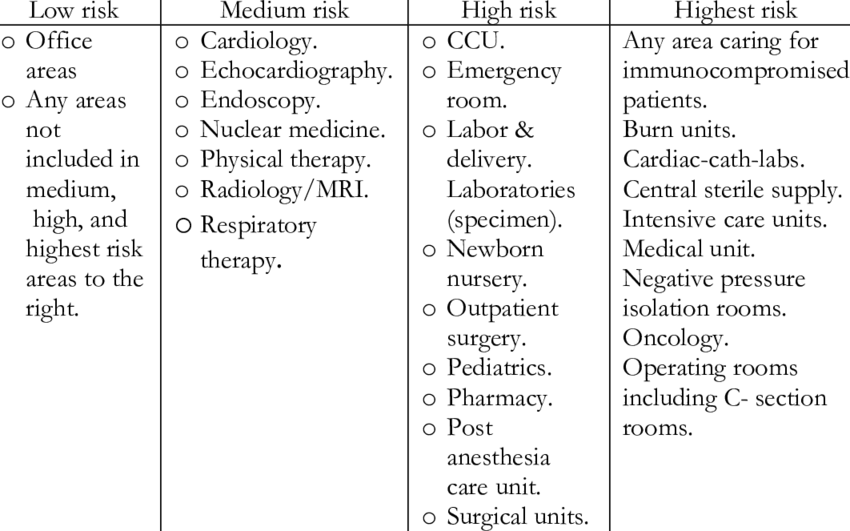

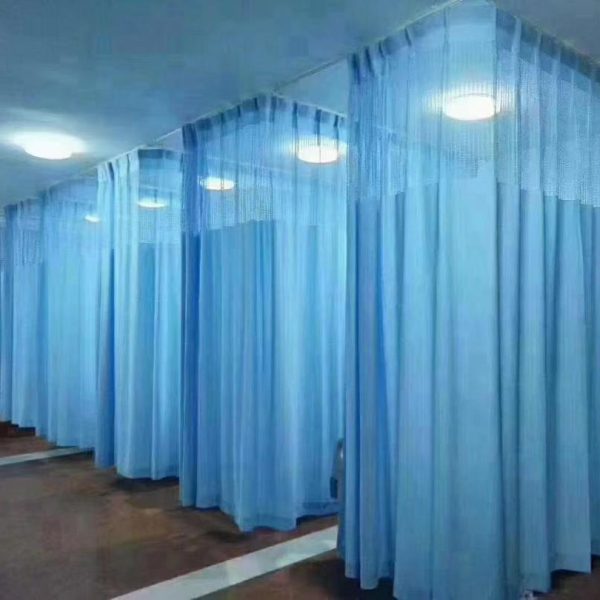
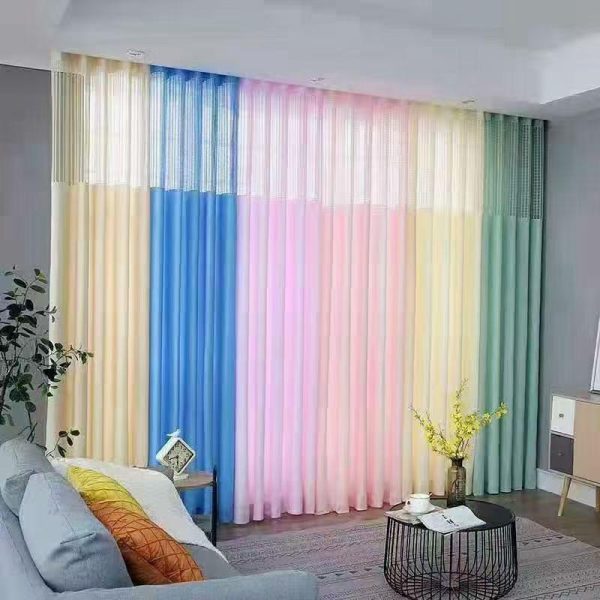
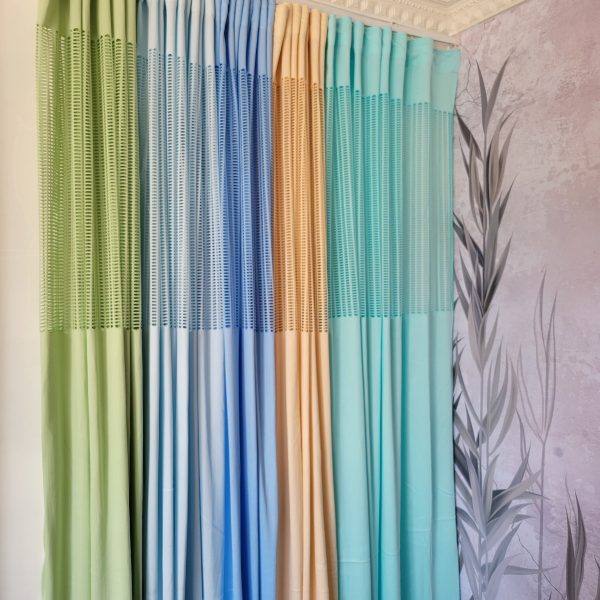
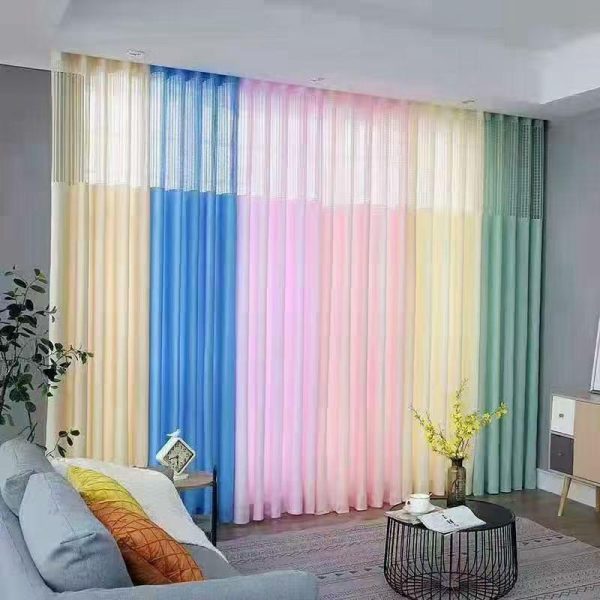
Reviews
There are no reviews yet.